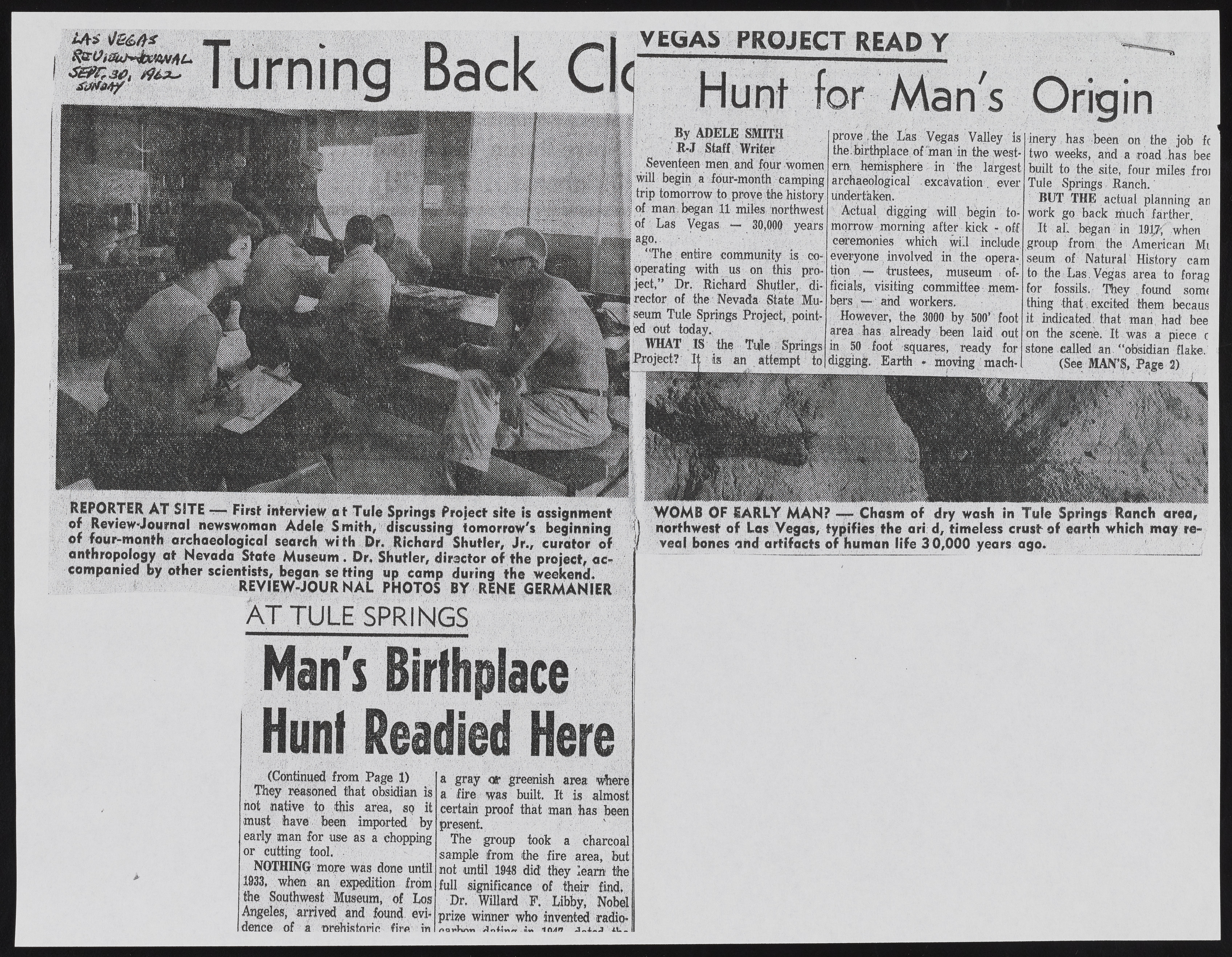Copyright & Fair-use Agreement
UNLV Special Collections provides copies of materials to facilitate private study, scholarship, or research. Material not in the public domain may be used according to fair use of copyrighted materials as defined by copyright law. Please cite us.
Please note that UNLV may not own the copyright to these materials and cannot provide permission to publish or distribute materials when UNLV is not the copyright holder. The user is solely responsible for determining the copyright status of materials and obtaining permission to use material from the copyright holder and for determining whether any permissions relating to any other rights are necessary for the intended use, and for obtaining all required permissions beyond that allowed by fair use.
Read more about our reproduction and use policy.
I agree.Information
Digital ID
Permalink
Details
More Info
Rights
Digital Provenance
Publisher
Transcription
j g p a j g w ^ Oi8uh*b(.viN$u m m m W sm ttm VEGA5 PROJECT READ Y Hunt M an's ByADELE SMITH R-J Staff Wnfei* Seventeen men and four women |j will begin a :.v%tr-mpnih ^camping ‘The entire ^community Is cch operating with I us on this project,” J)r, Richard Shutler, director of the Nevada State Mu- SBIseum Tule Springs Project, point-fed out today. WHAT IS the TtdeSprings prove tbe Las Vegas Valley is the 1 birthplace of "man in the western, hemisphere in ' the largest archaeological excavation. ever undertaken. Actual digging will begin tomorrow morning after kick - off ceremonies which will include everyone involved in the operation — trustees, museum . officials, visiting committee members | — and workers. However, the 3000 by 500' foot area has already been laid out in 50 foot squares, ready for an attempt to digging. Earth * moving mach inery has been on the job fc two weeks, and a road has bee built to the site, four miles froj Tule Springs Ranch. ; BUT THE actual planning an work go back much farther. It all beganin 191^ when group from the American Mi. seum of Natural History cam to the Las Vegas area to forag for fossils. They found sorru thing that excited them becaus it indicated that man had bee on the scene. It was a piece c stone called am '‘obsidian flake, (See MAN'S* Page 2) M W R T ER A T SITE — First interview a t Tule Springs Project site is assignment £ newswoman Adele Smith, discussing tomorrow's beginning of four-month archaeological search wi th Dr. Richard Shutler, Jr., curator of anthropology at Nevada State Museum . Dr# Shutler, director of the project, ac* companied by other scientists, began se fling up camp during the weekend* REVIEW -JOURNAL PHOTOS 8V RENE OERM ANIIR mm WOMB OF EARLY MAN? — Chasm of dry wash in Tule Springs (tench area, northwest of Las Vegas, typifies the ari d, timeless crusfr of earth which may re-veal bones and artifacts of human life 30,000 years ago. AT TULE SPRINGS Man's Birthplace Hunt Readied Here (Continued from Page 1) They reasoned that obsidian is not native to this area, so it must have been imported by early man for use as a chopping or cutting tool. NOTHING more was done until 1033, when an expedition from the Southwest Museum, of Los Apgei^ arrived and found evl* dence of a prehistoric fire in a gray or greenish area where a fire was built. It is almost certain proof that man has been present. The group took a charcoal sample from the fire area, but not until 1948 did they learn the full significance of their find* Br, Willard F. Libby, Nobel prixe winner who invented radio* O Q V n iA ti / I a f t i n i m (t'APt jJ a I i a J X L «.

